Removing the Flat Tire and Installing the Spare Tire
1. Do a safety check before proceeding. See Changing a Flat Tire.
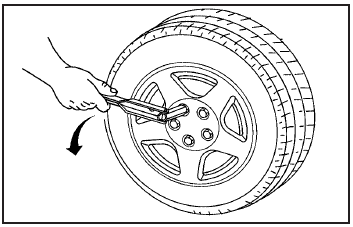
2. Turn the wheel wrench counterclockwise to loosen all the wheel nuts, but do no remove them yet.
3. Turn the jack handle counterclockwise to lower the jack lift head until it fits under the vehicle.
Turn the jack handle clockwise to raise the jack lift head.
WARNING:
Raising your vehicle with the jack improperly
positioned can damage the vehicle and even
make the vehicle fall. To help avoid personal injury
and vehicle damage, be sure to fit the jack lift
head into the proper location before raising the
vehicle.
Notice: If you position the jack under the rocker molding and attempt to raise the vehicle, you could break the molding and/or cause other damage to your vehicle. Always position the jack so that when the jack head is raised, it will fit firmly in the notch located inboard from the rocker molding.
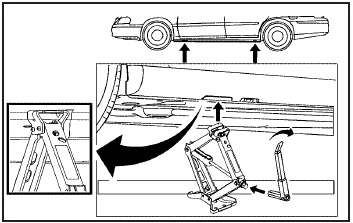
4. Put the jack into the flange in the frame which is located near each wheel well. The flanges are accessible through openings in the plastic trim at the bottom of the vehicle. The front opening is about 8 inches (20 cm) back from the front wheel well.
The rear opening is about 3 inches (8 cm) forward from the rear wheel well.
5. Position the jack and raise the jack head until it fits firmly on the ridge in the vehicle’s frame nearest the flat tire. Do not raise the vehicle yet.
6. Put the compact spare tire near the flat tire.
WARNING:
Getting under a vehicle when it is jacked up is
dangerous. If the vehicle slips off the jack, you
could be badly injured or killed. Never get under a
vehicle when it is supported only by a jack.
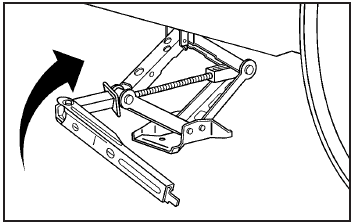
7. Turn the jack handle clockwise to raise the vehicle.
Raise the vehicle far enough off the ground for the compact spare tire to fit under the vehicle.
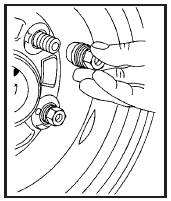
8. Remove all wheel nuts and remove the flat tire.
WARNING:
Rust or dirt on a wheel, or on the parts to which it is
fastened, can make wheel nuts become loose after
time. The wheel could come off and cause an
accident. When changing a wheel, remove any rust
or dirt from places where the wheel attaches to the
vehicle. In an emergency, use a cloth or a paper
towel to do this; but be sure to use a scraper or wire
brush later, if needed, to get all the rust or dirt off.
See Changing a Flat Tire.
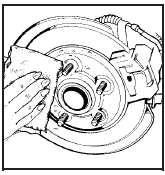
9. Remove any rust or dirt from the wheel bolts, mounting surfaces and spare wheel.
10. Install the compact spare tire.
WARNING:
Never use oil or grease on bolts or nuts because
the nuts might come loose. The vehicle’s wheel
could fall off, causing a crash.
11. Put the wheel nuts back on with the rounded end of the nuts toward the wheel. Turn each nut clockwise by hand until the wheel is held against the hub.
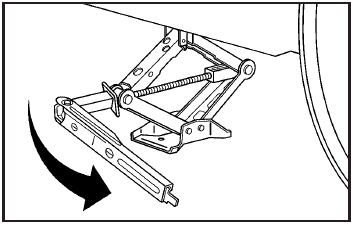
12. Lower the vehicle by turning the jack handle counterclockwise. Lower the jack completely.
WARNING:
Wheel nuts that are improperly or incorrectly
tightened can cause the wheels to become loose
or come off. The wheel nuts should be tightened
with a torque wrench to the proper torque
specification after replacing. Follow the torque
specification supplied by the aftermarket
manufacturer when using accessory locking wheel
nuts. See Capacities and Specifications for original equipment wheel nut
torque specifications.
Notice: Improperly tightened wheel nuts can lead to brake pulsation and rotor damage. To avoid expensive brake repairs, evenly tighten the wheel nuts in the proper sequence and to the proper torque specification. See Capacities and Specifications for the wheel nut torque specification.
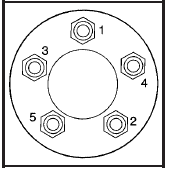
13. Tighten the wheel nuts firmly in a crisscross sequence as shown.
See also:
Vehicle Personalization
The audio system controls are used
to access the personalization
menus for customizing vehicle
features.
CONFIG (Configuration): Press to
access the Configuration
Settings menu.
Menu Knob: ...
Steering Wheel Adjustment
Steering Wheel Adjustment
To adjust the steering wheel:
1. Pull the lever (A) down.
2. Move the steering wheel up
or down.
3. Pull or push the steering wheel
closer or away from you.
4. Pul ...
Following Distance
Stay at least twice as far behind the vehicle ahead as you would
when driving the vehicle without a trailer. This can help to avoid situations that
require heavy braking and sudden turns. ...


